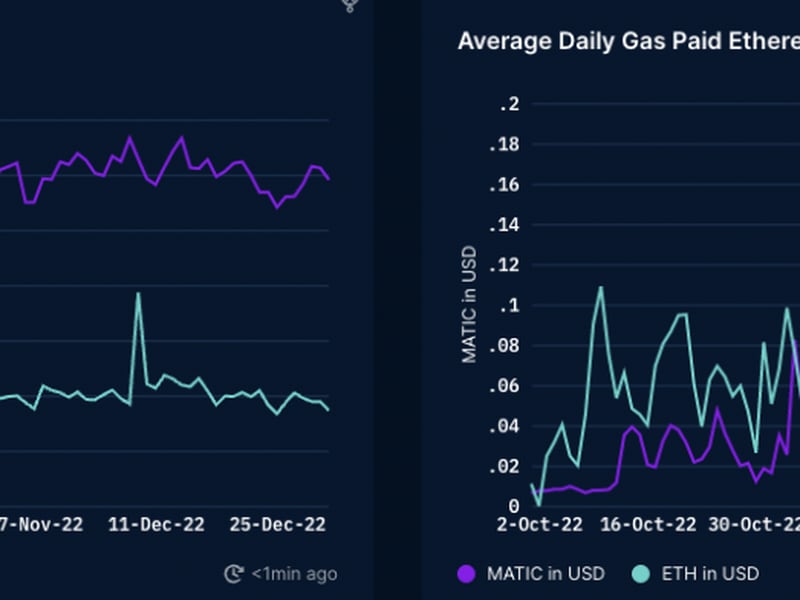Polygon Q4 Transaction Volatility Fueled by FTX Collapse, ZK Rollup Testing, Nansen Says

Polygon, an Ethereum scaling tool, saw wide swings in daily transactions and active addresses during the fourth quarter, as users scrambled to move funds during the epic meltdown of Sam Bankman-Fried’s FTX crypto exchange and the project rolled out new partnerships and initiatives, according to a new report from the blockchain analytics platform Nansen.
Polygon saw daily transactions range from 2 million to 3.7 million, while daily active addresses ranged from 350,000 to 1.7 million.
The number of daily transactions surged on Polygon in early November, when users attempted to yank out funds from the now-defunct FTX. Daily gas fees paid also peaked at the time, with the highest day at $570,000. The lowest point for daily gas fees paid was at $16,000 in early October.

Compared to Ethereum, Polygon’s daily transactions were almost twice as high and more volatile during the quarter, while daily gas paid was 40 to 100 times cheaper on Polygon.
Yi Jun Lee, the author of the report and a research analyst at Nansen, told CoinDesk that Polygon’s volatility in Q4 was due to numerous events besides the FTX insolvency.
“NFT launches, partnerships, can all lead to an increase in the number of transactions, not solely moving the native token,” Lee said.
The tremendous addition of daily addresses was partly due to the launch of Polygon’s zero-knowledge EVM public testnet.
Zero-knowledge (ZK) rollups is a technology that processes transactions in bundles and uses “proofs,” which are bite-size pieces of data that confirm transactions are “true” and haven’t been altered. The deployment of the Ethereum Virtual Machine (EVM) for Polygon’s ZK rollup means developers can move smart contracts into the Polygon environment from Ethereum without any hiccups.
The mainnet launch of Polygon’s zkEVM is scheduled for early 2023.
Read more: Ethereum Scaling Tool Polygon Launches its zkEVM Public Testnet
Also bringing more users into the Polygon ecosystem was the announcement to integrate the Binance USD (BUSD) stablecoin into the protocol.
The Starbucks Odyssey loyalty program made members eligible to earn and purchase digital collectibles in the form of non-fungible tokens (NFTs) on Polygon. Instagram began testing new features to sell NFTs on the Polygon network.
As for what to look out for leading into the new quarter, Lee argues the zkEVM mainnet launch, NFT sales on the blockchain, as well as mainstream adoption, will lead to continued user growth for Polygon.








